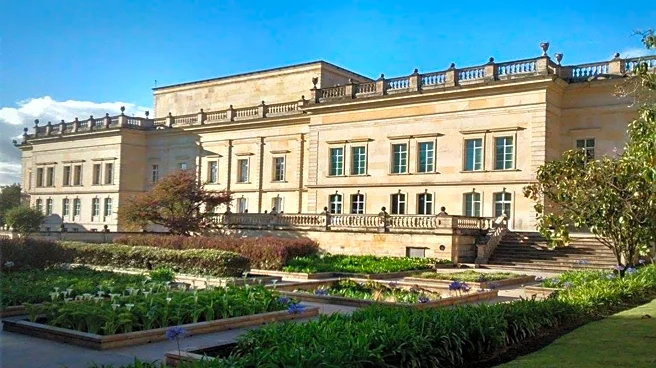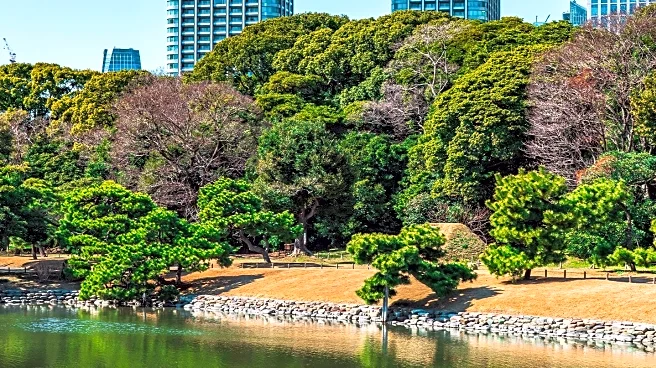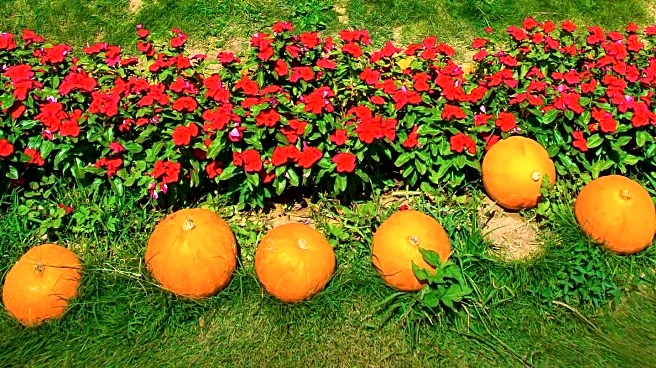What is the story about?
What's Happening?
Tate Britain is set to transform its Millbank entrance with the creation of new Mediterranean and East Asian-inspired green spaces, including a 'garden classroom' for children. This initiative, approved by Westminster City Council, aims to replace existing open spaces with a large, biodiverse public garden. The project, led by architects Feilden Fowles and designer Tom Stuart-Smith, focuses on softening the gallery's external appearance and connecting people with nature's cycles. The redesign will feature a Mediterranean-inspired garden to the south, a natural pond, and a green space influenced by East Asian woodland planting. The garden classroom will serve schools, community groups, and volunteers, enhancing the educational experience for the thousands of schoolchildren visiting the museum annually.
Why It's Important?
The garden classroom project at Tate Britain represents a significant shift towards making cultural institutions more accessible and welcoming to diverse audiences. By integrating natural elements and educational spaces, the museum aims to break down barriers for visitors who may find traditional museum settings intimidating. This initiative could serve as a model for other museums seeking to enhance visitor engagement and inclusivity. The project also highlights the importance of connecting urban populations with nature, potentially influencing public policy on urban planning and green space development. The involvement of local residents in the redevelopment process underscores the community-centric approach of the project.
What's Next?
Following the approval by Westminster City Council, Tate Britain will proceed with the construction of the garden classroom and associated green spaces. The museum plans to employ Westminster residents in the redevelopment, fostering local involvement and support. The Licensing Committee is scheduled to review the application on September 30, which may lead to further refinements in the project. As the garden evolves throughout the year, it will offer new opportunities for events and educational programs, potentially attracting more visitors and enhancing the museum's role as a community hub.
Beyond the Headlines
The transformation of Tate Britain's entrance into a biodiverse garden space reflects broader cultural and environmental trends. It emphasizes the growing importance of sustainability and biodiversity in urban settings, potentially influencing future architectural and landscape design practices. The project also raises ethical considerations regarding the role of cultural institutions in promoting environmental awareness and education. By creating spaces where 'everyone belongs,' Tate Britain is addressing cultural inclusivity and accessibility, which are critical issues in the arts sector.
AI Generated Content
Do you find this article useful?













